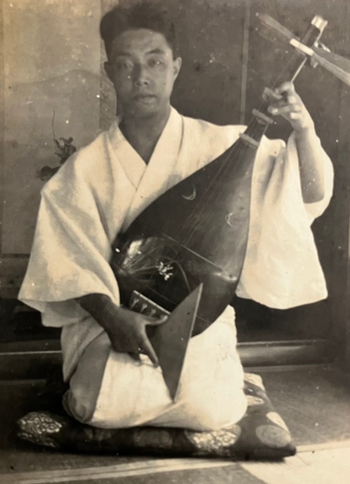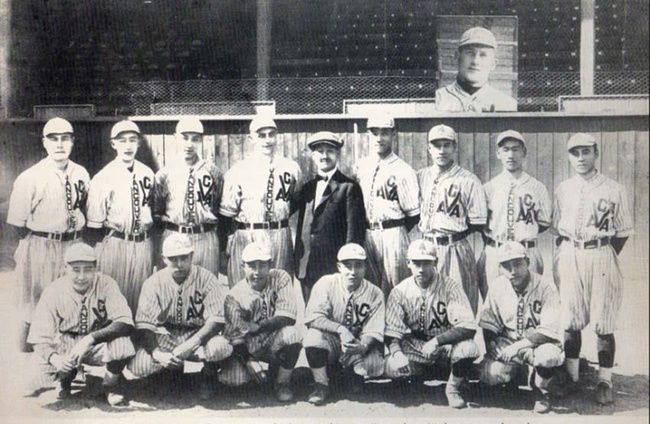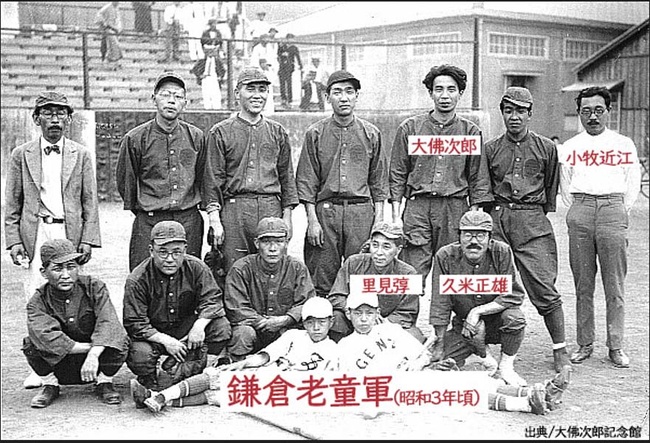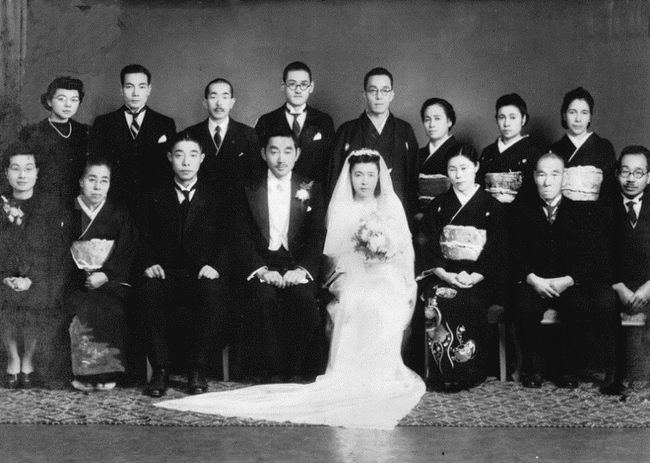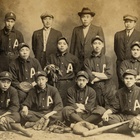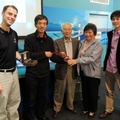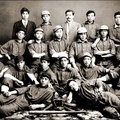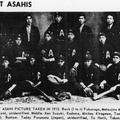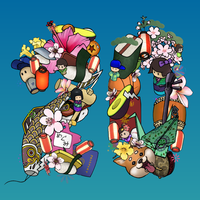Yuji Uchiyama’s Biography
Yuji Uchiyama was born in 1895 as the eldest son to his father Eiho Uchiyama and mother Shizu. He enrolled in Keio Commerce and Industry School (now Keio High School) and learned Baseball there around 1913. It is believed that Uchiyama gained his baseball experience there. This school won a national championship in 1916 and last year, they won their second championship after 107 years. Yuji Uchiyama would have been delighted to hear the news.
When the Keio University baseball team visited Vancouver in 1914, Uchiyama, at the welcome party, played the Satsuma biwa (lute music) which was popular at the time, and a newspaper article was published covering the event.
After moving to Vancouver, Uchiyama became the Vancouver expat employee for Hara Goumei-gaisha (general partnership company), that handled the export of silk run by Tomisaburo Hara from Kanagawa Prefecture. This company had briefly employed Yuji’s father, Eiho Uchiyama, too.
From 1914 to 1915, Uchiyama was a member of the Japan Athletic Club (commonly known as the Vancouver Nippon Team). Around this time, my uncle was playing for the Vancouver Asahi, so I suppose he might have encountered Uchiyama in a game or two.
The Japan Athletic Club dissolved later on, but Uchiyama joined the Vancouver Asahi in 1920. After the baseball season that year, he accompanied the Seattle Mikado team’s expedition to Japan as their manager.
Meanwhile, the Vancouver Asahi formed an expedition team to Japan after the end of the 1921 baseball season. Uchiyama, recognized for his expedition experience from the previous year, accompanied them as both manager and player. Details about this expedition can be found in Uchiyama’s serialized expedition memoirs published in the Nikkei newspaper Tairiku Nippo from September 28, 1921, to January 17, 1922, spanning 19 parts.1
In 1923, Uchiyama married Miyako Okinobu from Hiroshima Prefecture, and they had two children in Vancouver. Later, he returned to Japan and engaged in international seafood trade in Kamakura and had three more children. Their youngest child, Yasuo, was born in Showa 8 (1933).
Uchiyama seemed to have passed on his photos and documents to his son Yasuo, but during his end-of-life preparations, Yasuo disposed of all of them except for a few photographs.
Kamakura Rodo-gun
After settling in Kamakura, Uchiyama joined a baseball club in Kamakura called Kamakura Rodo-gun. Although they have already been disposed of and we can’t see them now, Uchiyama was so passionate about the team that he organized reports of their activities into a newspaper-like format and distributed them to his baseball friends.
Kamakura Rodo-gun was established at the end of the Taisho period, and when Uchiyama joined, the team was led by the writer Masao Kume as manager. Many literary figures were members of the team, including renowned novelists Jiro Osaragi and Ton Satomi, Hideo Kobayashi, Hidemi Kon and Hachiro Sato.
In 1938, they participated in the 7th Intercity Baseball Tournament as the representative team for the Tokai region (at the time) and was spotlighted for their uniqueness. Despite losing their first game against All Taipei with a score of 10-1 due to defensive lapses, some commented that if their pitcher was [had been] in top form, the team might [have] overthrow[n] a strong counterpart.
During this period when Uchiyama continued playing for the Kamakura Rodo-gun, baseball was becoming popular among the masses in Japan. We can say that Uchiyama was in this bigger trend of the era.
For his English proficiency and baseball experience, Uchiyama was also tasked with handling and coordinating the visits of numerous American baseball teams that came to Japan on expeditions during that time.
Kamakura Lawn Tennis Club
In addition to playing baseball since his time in Vancouver, Uchiyama also played tennis as a member of the Japanese Tennis Club. After returning to Japan, he joined the prestigious Kamakura Lawn Tennis Club and continued his tennis activities. The Kamakura Tennis Club, which owned three courts behind Kamakura Station, had around 70 members. Among them, the majority were writers (including journalists), along with officials from the Ministry of Railways, naval officers, company employees, town council members, businesspersons, and students, representing various social classes who got together for the activities. Apparently the writer Jiro Osaragi, whom Uchiyama played with at Kamakura Rodo-gun, was also a member of the club.
Receiving the Hall of Fame Commemorative Medal
Given this career, on March 18, 2024, 21 years after Vancouver Asahi’s induction into the Canadian Baseball Hall of Fame in 2003 and 19 years after the team’s induction into the BC Sports Hall of Fame in 2005, Yuji Uchiyama’s Hall of Fame medal was awarded to his family in the ancient city of Kamakura where the spring cherry blossoms bloomed. The commemorative medal award ceremony was held at Garden House Kamakura near the Kamakura City Hall, and three members of the Uchiyama family attended. Some guests included family members of other players of Asahi and related individuals, with some coming from nearby and others traveling long distances from places such as Kyoto and Shiga. At the ceremony, congratulatory speeches from the BC Sports Hall of Fame and the Canadian Baseball Hall of Fame were delivered to the family along with the medal.
Here is a quote from the email sent by Uchiyama’s granddaughter Nahoko Nakamura.
Since I didn’t even know my grandfather was a baseball player, I was surprised to find out about this but at the same time I’m happy to hear this as his grandchild.
Thank you so much for sending so many documents. I am overwhelmed by the amount of information. At the same time that I’m surprised at the depth of your research, I’m grateful that you gave me a chance to learn about my grandfather.
Also, her cousin told me that Uchiyama served as a go-between when the former Vancouver Asahi member Sally Nakamura had his wedding in Japan. Below is the photo that Sally Nakamura’s son Osamu gave me.
Standing on either side of the bride and groom are the Uchiyama couple, suggesting that he maintained contact with the team even after returning to Japan.
With the warm reception from the bereaved family, this concludes my journey of finding the family of the late Yuji Uchiyama. He finally received the honor that he very much deserved. I’m sure he’d never expected something like this to happen.
Remaining Four Medalists Awaiting Medal Delivery
Today I have still yet to find the family members of the following four medalists who haven’t received their medals. (Note: the years in parentheses are when each belonged to Asahi)
- K. Endo (1938) – From Tottori Prefecture (presumably). He is known to have lived in Winnipeg in 1972.
- Barry Kiyoshi Kasahara (from 1919 to 1923) – His parents are from Yokohama. In 1942, he was sent to Hastings Park and passed away there. He is buried in the Mountain View Cemetery in Vancouver.
- Yoshio Miyasaki (from 1925 to 1926) – His birthplace is unknown. He is believed to have returned to Japan.
- Dr. Henry Masataro Nomura (from 1919 to 1929) – He is buried in the Forest Memorial Cemetery. His wife is Lovenda Heidinger.
I would like the families of these four members to feel the same deep emotions as I did. Please let me know if you have any information about them.
* * * * *
It’s been ten years since I started searching for the family members of the medalists awaiting their medal delivery. Throughout this journey, I once again learned about the significant influence of baseball culture across borders. I hope that what took place over the past ten years will be continually remembered and celebrated, and will not end up being a one-off occasion.
Lastly, I would like to express my great appreciation to Satoshi Matsumiya in Hikone for providing me with the resources that supported my research on the Japan side.
Note:
1. My fellow Vancouver Asahi researcher Mr. Satoshi Matsumiya (the grandson of Mr. Sotojiro Matsumiya who was the first chairperson of Vancouver Asahi) summarized the expedition record, and I translated it into English (titled “1921 Vancouver Asahi’s Tour to Japan”) and sent it to the Society for American Baseball Research. It was published in the new anthology, Nichibei Yakyu: US Tours of Japan, 1907-1958. This publication received the SABR Baseball Research Award from the Society for American Baseball Research in 2023.
* This article was originally published in the March 2024 issue of Fraser Monthly in Japanese and was edited and expanded for Discover Nikkei.
© 2024 Yobun Shima


